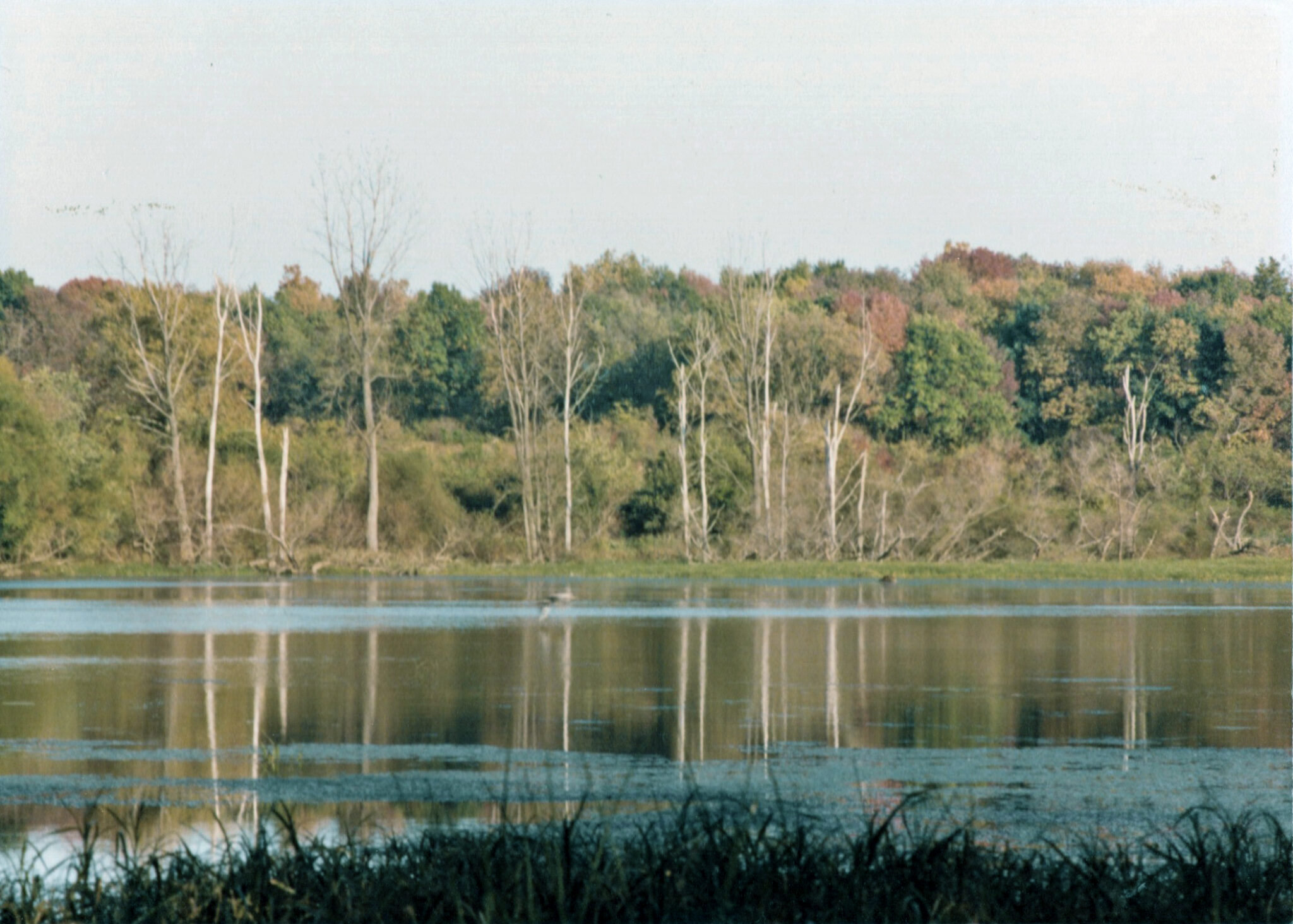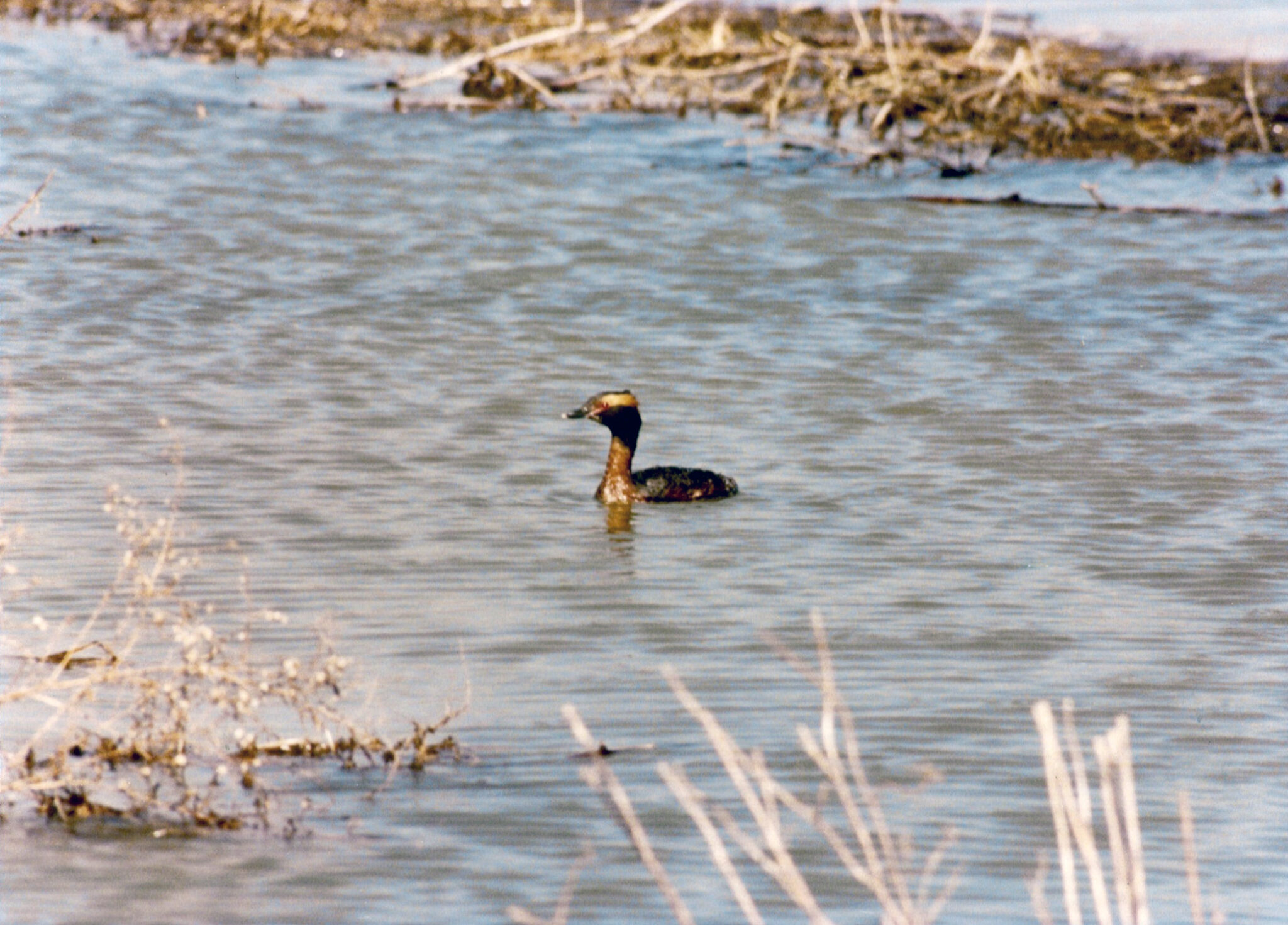Observations at Stage’s Pond
As a 17-year-old senior in high school, Gale’s Advanced Science Class project was to take an inventory of the flora and fauna of a nearby kettle pond, which was soon to be opened to the public as Stage’s Pond State Nature Preserve. She visited the site daily during the autumn of 1977.
October: Leaves in my pockets, burrs on my pants, I pause for a moment to rest on a well-worn stump. In front of me stretches the basin, a quietly rolling sea of browns and greens. To my right lies the pond, and as I look, I glimpse a single mallard before it disappears behind the pond’s frame of trees. The woods stretch to my left, vibrant with color, motion and life, even in this season of death.
The maple’s bright gold and the oak’s brick red are the most striking, but it is hard to separate a few single trees as being the most lovely. It is the combination of them all that creates beauty.
A noisy and boisterous red-bellied woodpecker made his presence known for a few minutes but has either calmed down or disappeared to another part of the woods.
The freshness and severity of this place do wonders for my soul. The seasonal cycle seems to be proceeding calmly and deliberately, as it has for so many years. The wood (stump) does not exactly welcome—it is unchanged, unperturbed. It seems to accept me as part of it, and not anything to make a fuss over. I like this—I feel more like this is my home rather than a strange place to be visited and observed.
My seat on the stump grows, and I am caught in a loud argument between two groups of crows. It is time to move on and leave this ridge. … A rather large tree appears to have fallen across the path, and upon this, I am resting. My pockets are now completely stuffed with leaves and specimens—some for identification, others for their beauty. At any rate, this still makes a comfortable stop.
The woods grow in beauty and peace as I move on. I am now on the White Oak Trail, in a part of the woods I’ve only explored once before, and then very briefly in the spring. New trees and asters appear—the whole character of the woods is different from before. These woods have not been pastured recently, and are denser, wilder. It is sad they are so relatively inaccessible due to my usually brief visiting hours, but I can especially appreciate this rare visit.

December: My Stage’s Pond project has turned into a passion for me. It was a source of fascination, relaxation, bewilderment, pleasure, and a great many ducks. I had high hopes of a good migration, and I got one—both in numbers, variety and stray visitors. For 15 weeks I was able to visit the pond every single day and take a survey. To show how exciting a migration it was, the last day I observed (Dec. 5) just before a very bad blizzard hit and froze the ground, I recorded two new waterfowl species. I loved it all so much that I tried to visit more than just once a day, sometimes spending whole afternoons tramping through the woods and meadows. I also birded around the area; and last, but not least, stuck my toe into the door of the plant kingdom. This was all new to me, and sometimes difficult, but I persevered and recorded over 100 plant species this fall. … While my family and friends were attracted to one species of waterfowl or another, I never met a duck I didn’t like. The northern phalarope (Silly Phil) was the ornithological find of the season, and he/she was very endearing with its spinning and darting; the hooded mergansers never failed to just take my breath away; and I rather like the stolid, friendly, down-to-earth-type mallards. But if I had to pick a favorite, no doubt the wood ducks would win.

From summer clear into December I watched wood ducks – sometimes in staggering huge and milling flocks, sometimes in quiet families, sometimes sleeping peacefully on one leg with oversized heads tucked under a wing; sometimes playing wildly and splashingly in the shadows of the tree-lined edge, sometimes perched high up in the trees, sometimes swimming—excuse me—floating serenely on the surface feeding peacefully and creating in me a feeling that all must be right with the world. I watched young broods grow into adults and break away from the family flotillas; I watched eclipse-plumage males gradually gain their beauty, feather by feather until they shone in full plumage so gorgeous that no one questioned their hold on the title of the world’s most beautiful duck. I watched flocks of 200 and more fly in at dusk to rest on the pond; I watched as many take off and encircle the pond at sunrise, seemingly flying only to celebrate the birth of a new day. I watched a single lost baby stray so close to me that his fuzzy body nearly filled the scope, and many times I had to struggle to discern the far-away shapes on the farthest part of the pond. Their sweet, hauntingly wild call greeted me in the morning as they awoke, at midday as they played, and at night as they flew in with a whuffling of feathers and the rippling sound of many splashing bodies. From the dozen or so resident pairs to the restless stragglers of November, the woodies never ceased to delight me.


